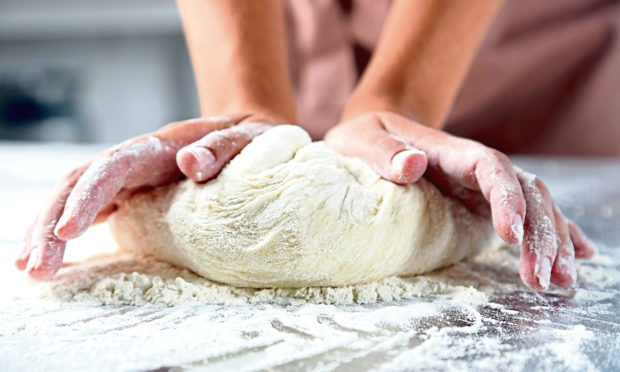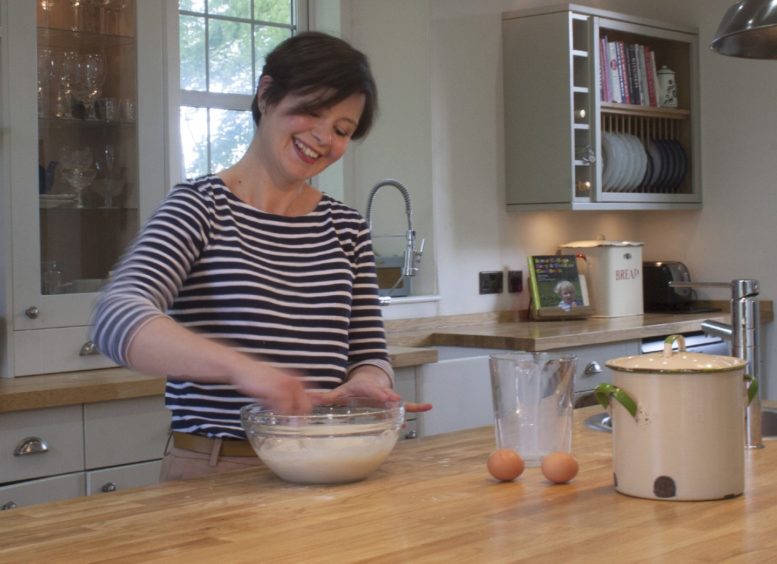Catherine Devaney says don’t be overwhelmed when making pastry as she shares a recipe from her kitchen in the Fife countryside.
In terms of difficulty, pastry has quite the reputation. Perhaps it’s the multiplicity of different variants that people find off-putting.
There’s shortcrust, sweetpaste, choux paste, puff, rough puff, filo, hot water paste, suet paste, all to contend with. But don’t be overwhelmed, shortcrust is easy to master and a great culinary weapon for your arsenal.
The guiding principle for shortcrust pastry is that the ratio of fat to flour should be half, so begin with 200g flour and 100g unsalted butter. Always use fridge-cold butter and handle the mix as little as possible.
A light touch is important to stop the gluten in the flour strengthening; elasticity is good for bread but not good when the goal is a light and flaky pastry.
Rub the very cold butter into the flour, with a pinch of salt, to a sandy consistency. A stand mixer with the paddle beater seems to achieve the desired consistency more quickly and produces a finer result, but if you don’t have one, simply use your fingers. Next, add one egg yolk and mix to combine. The egg adds an extra richness and golden colour.
Chilling
Lastly, while still mixing on a slow speed, add between two and four tablespoons of ice-cold water, just enough to bring the pastry together.
Gently bring together and press down gently into a flattish oval shape, wrap tightly in cling film and place in the fridge to chill for 30 minutes before rolling out. Chilling is essential as it lets the dough rest and relaxes the gluten.
Roll out on a lightly floured surface, then use it to line your desired tart tins. Prick all over the bottom with a fork then line with baking paper (or good quality cling film) and fill with baking beans, chill again for 30 minutes, then blind bake at 200C/ Fan180C/ 400F/Gas Mark 6 until crisp and golden. Once the tarts have been baked, a versatile recipe for the quiche filling is two eggs, beaten with 125g milk and 125g double cream, with a pinch of salt.
Then fill the tart shells, add your fillings and bake at 180C/Fan 160C/350F/Gas Mark 4. Sundried tomato and feta is a particular favourite of mine and works especially well for these mini tartlets.

